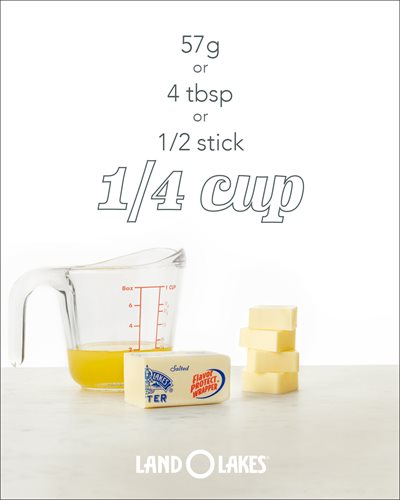

All About Butter with the Butter Experts
Who better to teach all about butter than butter experts from the Land O’Lakes test kitchen? Find tips for measuring out, freezing, storing, and softening butter.
 by
Ann
by
Ann
 by
Ann
by
Ann
Who better to fill you in on the butter basics other than our butter experts in the Land O’Lakes Test Kitchen? Below are tips covering how to store and freeze butter as well as how to measure and soften butter. Whether you’re spreading or baking, keep informed with these great tips:
Tips for Freezing Butter
You know butter reigns supreme and you’ve stocked up. Now what? If you’ve purchased more butter than you can use by the date printed on the package, you can buy yourself time by freezing the butter. Butter can be kept in the freezer for up to four months without changing its texture, flavor or performance. For best results, wrap the butter carton tightly in aluminum foil or first seal it in a freezer-safe food-storage plastic bag. Once frozen butter has thawed, you’ll want to use it within 30 days.
Tips for Storing Butter
For shorter-term storage, keep butter and butter spreads in its original packaging and store in the coldest part of your refrigerator. That cute little butter shelf on the inside of your refrigerator door? Find another use for it as it experiences too much temperature fluctuation when the refrigerator is opened. Butter likes cool and stable temperatures best!

Tips for Softened Butter
While chilling butter keeps it fresh longer (and is also the recommendation of the FDA and USDA), there is often call for softened butter. Whether you’re spreading it on bread or mixing it up into a dough or batter, butter takes time to soften. Setting chilled butter on the counter 30 to 45 minutes prior to use gives it the time it needs to soften well.
Don’t have that kind of time? There are a few shortcuts that can help move the process along.
Tried and True:
Setting chilled butter on the counter 30 to 45 minutes prior to use gives it the time it needs to soften well.
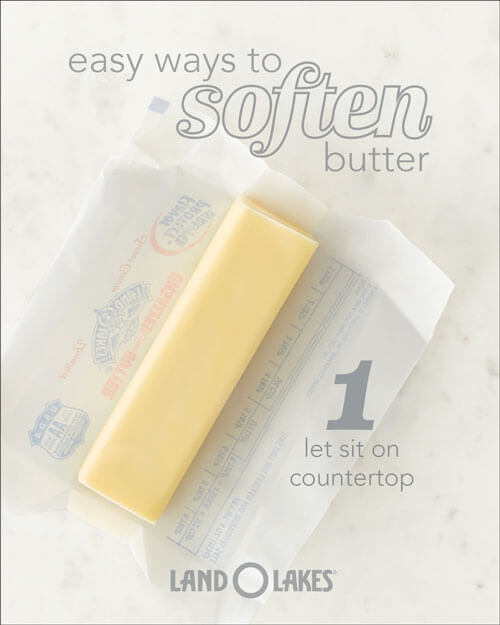
Cut That Time in Half:
Cutting butter into small chunks, then letting it stand at room temperature for 15 minutes will soften it sufficiently for use in baking.
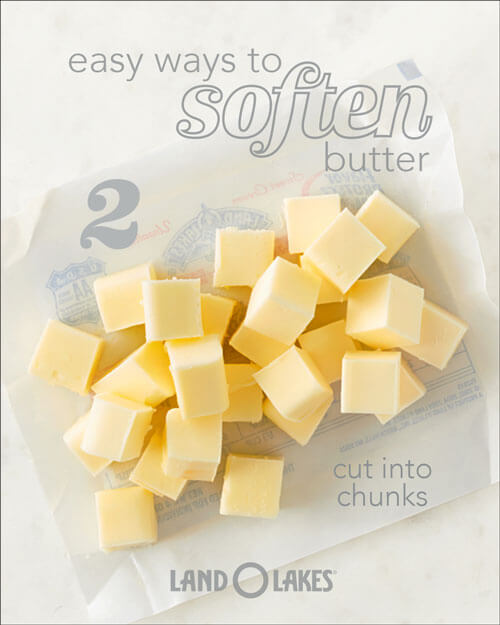
A little Quicker:
You could also place your butter stick in a resealable plastic bag or between two sheets of waxed or parchment paper before pounding it with a rolling pin or meat pounder to flatten and soften.
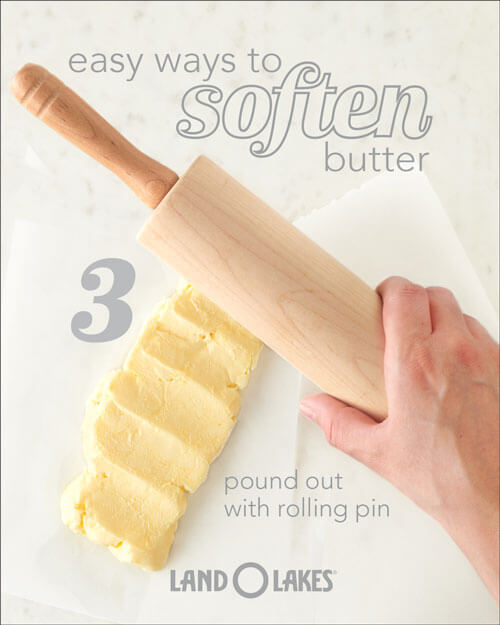
In a Pinch:
Though it’s not recommended for baking, you can use the microwave to soften butter in a pinch –but keep a close eye on it! Softened butter and melted butter are not the same. Using melted will change the texture of whatever you are baking and being that butter melts readily, it’s easy to accidentally take it from solid to liquid in just a few seconds. If you only want the butter to soften for spreading, go ahead and microwave it on Defrost setting (30%) in 5-second increments until it’s softened as desired.
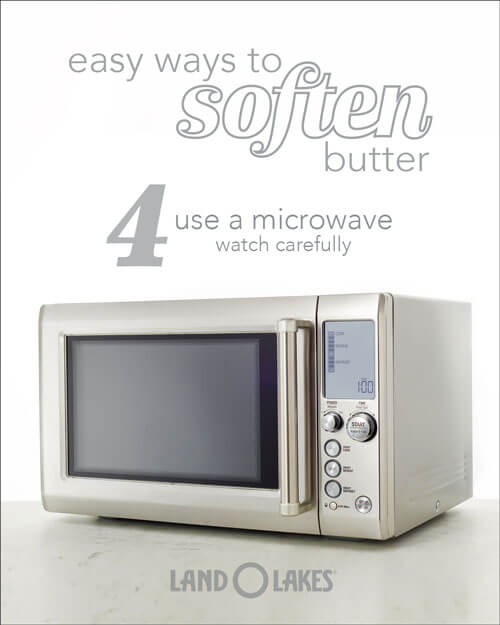
Tips for Measuring Butter
Land O Lakes® Butter sticks are conveniently marked into tablespoons for simple measuring, so you’ll never have to guess how much is what. Standard butter amounts are as follows:
¼ cup = 4 Tablespoons = ½ full stick of butter
½ cup = 8 Tablespoons = 1 full stick of butter
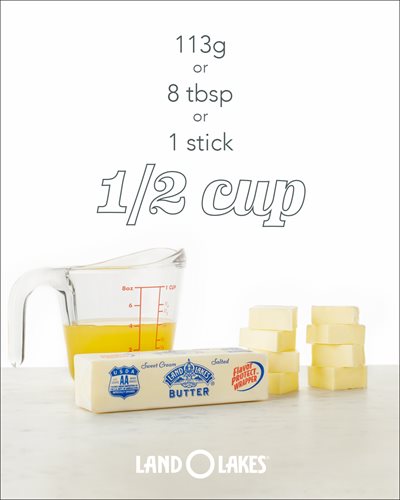
¾ cups = 12 Tablespoons = 1½ full sticks of butter
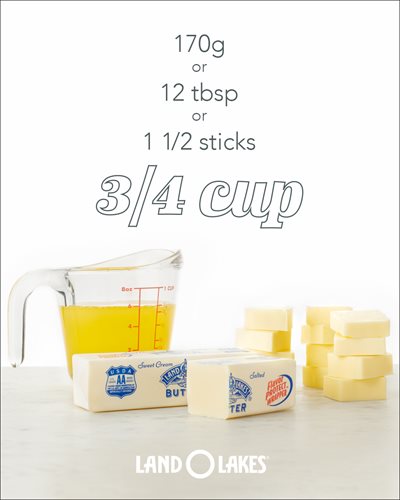
1 cup = 2 full sticks = ½ pound
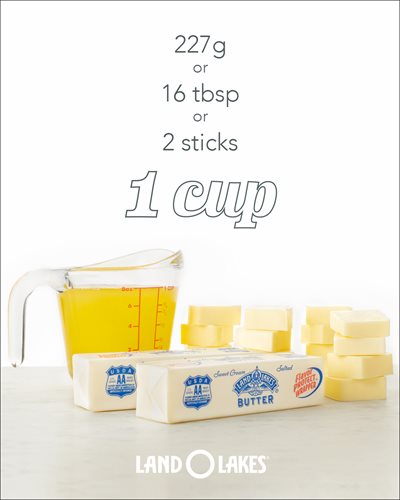
For more information regarding measuring butter, or any other ingredient, be sure to visit our Measurements and Abbreviations page to find our butter conversion chart, common and metric measurements and abbreviations to help you in the kitchen!
Now that you have Butter Basics down, you’re ready to take it to the kitchen. Did you find this helpful? Let us know in the comments below or let us know what butter questions you still have, and we’ll be sure to answer them!
Share Your Thoughts
Did you find this article helpful? Has it inspired you? What else would you like to know?


